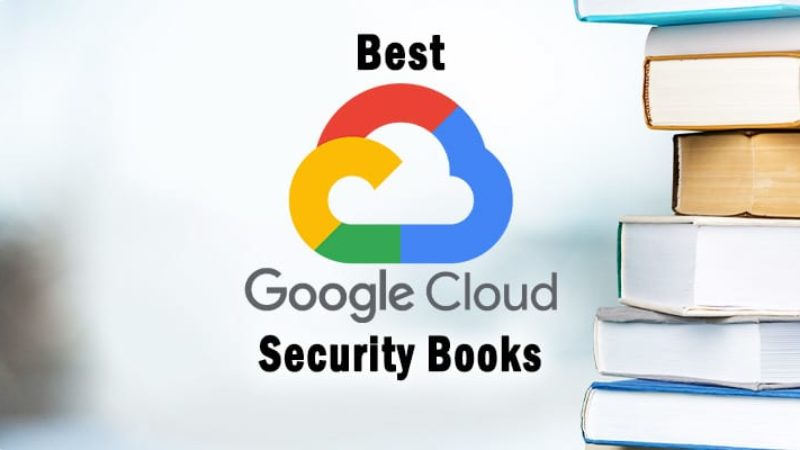The Best Books for Cloud Architects on Amazon


 There are plenty of free resources for cloud architects available online, but sometimes, it’s best to do things the old-fashioned way, especially since few resources can match the depth of a good book. Solutions Review has researched some of the best books for cloud architects on the market and carefully selected the following titles based on their industry relevance and overall popularity, ratings, publish date, and ability to add business value.
There are plenty of free resources for cloud architects available online, but sometimes, it’s best to do things the old-fashioned way, especially since few resources can match the depth of a good book. Solutions Review has researched some of the best books for cloud architects on the market and carefully selected the following titles based on their industry relevance and overall popularity, ratings, publish date, and ability to add business value.
Below, you will find a library of the best books for cloud architects from recognized leaders, experts, and technology professionals in the field. These publications have something to offer even the most tenured cloud architects. The books below are listed in no particular order. To learn more, consider checking out our Cloud Managed Service Provider Buyer’s Guide or our popular best practices section.
Note: The best books for cloud architects are listed in no particular order.
The Best Books for Cloud Architects
Title: Multi-Cloud Architecture and Governance: Leverage Azure, AWS, GCP, and VMware vSphere to Build Effective Multi-Cloud Solutions
OUR TAKE: This book from Jeroen Mulder is directed at architects and lead engineers with a focus on getting governance right. Readers will learn multi-cloud management with the principles of BaseOps, FinOps, SecOps, and DevOps.
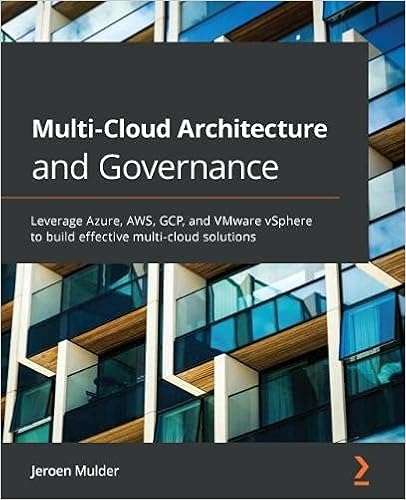 Description: Multi-cloud has emerged as one of the top cloud computing trends, with businesses wanting to reduce their reliance on only one vendor. But when organizations shift to multiple cloud services without a clear strategy, they may face certain difficulties, in terms of how to stay in control, how to keep all the different components secure, and how to execute the cross-cloud development of applications. This book combines best practices from different cloud adoption frameworks to help you find solutions to these problems.
Description: Multi-cloud has emerged as one of the top cloud computing trends, with businesses wanting to reduce their reliance on only one vendor. But when organizations shift to multiple cloud services without a clear strategy, they may face certain difficulties, in terms of how to stay in control, how to keep all the different components secure, and how to execute the cross-cloud development of applications. This book combines best practices from different cloud adoption frameworks to help you find solutions to these problems.
Title: Cloud Computing Solutions Architect: A Hands-On Approach: A Competency-based Textbook for Universities and Guide for AWS Cloud Certification and Beyond
OUR TAKE: Arshdeep Bahga and Vijay Madisetti guide readers through this title. Bahga is a researcher in cloud computing, IoT, and big data analytics. He has also authored a number of scientific publications in peer-reviewed journals.
 Description: This book is written as a textbook for training the next generation of cloud solutions architects for educational programs at colleges and universities, and also accompanying cloud certification programs where students would be interested in obtaining valuable hands-on skills on actual cloud platforms to further develop their knowledge and competency base. The typical reader is expected to have completed a couple of courses in programming using traditional high-level languages at the college level, and is either a senior or a beginning graduate student in one of the science, technology, engineering or mathematics (STEM) fields. The reader is provided the necessary guidance and knowledge to develop working code for real-world cloud computing applications.
Description: This book is written as a textbook for training the next generation of cloud solutions architects for educational programs at colleges and universities, and also accompanying cloud certification programs where students would be interested in obtaining valuable hands-on skills on actual cloud platforms to further develop their knowledge and competency base. The typical reader is expected to have completed a couple of courses in programming using traditional high-level languages at the college level, and is either a senior or a beginning graduate student in one of the science, technology, engineering or mathematics (STEM) fields. The reader is provided the necessary guidance and knowledge to develop working code for real-world cloud computing applications.
Title: The Azure Cloud Native Architecture Mapbook: Explore Microsoft Cloud’s Infrastructure, Application, Data, and Security Architecture
OUR TAKE: This title from Stephane Eyskens and Ed Price explores the key drivers of successful Azure architecture. The authors utilize practical use cases to explain architecture maps in detail.
![The Azure Cloud Native Architecture Mapbook: Explore Microsoft Cloud’s infrastructure, application, data, and security architecture by [Stephane Eyskens, Ed Price]](https://m.media-amazon.com/images/I/51dlr7G8HjL.jpg) Description: Starting with the key aspects of architecture, this book shows you how to map different architectural perspectives and covers a variety of use cases for each architectural discipline. You’ll get acquainted with the basic cloud vocabulary and learn which strategic aspects to consider for a successful cloud journey. As you advance through the chapters, you’ll understand technical considerations from the perspective of a solutions architect. You’ll then explore infrastructure aspects, such as network, disaster recovery, and high availability, and leverage Infrastructure as Code (IaC) through ARM templates, Bicep, and Terraform.
Description: Starting with the key aspects of architecture, this book shows you how to map different architectural perspectives and covers a variety of use cases for each architectural discipline. You’ll get acquainted with the basic cloud vocabulary and learn which strategic aspects to consider for a successful cloud journey. As you advance through the chapters, you’ll understand technical considerations from the perspective of a solutions architect. You’ll then explore infrastructure aspects, such as network, disaster recovery, and high availability, and leverage Infrastructure as Code (IaC) through ARM templates, Bicep, and Terraform.
Title: Cloud Computing: Concepts, Technology & Architecture
OUR TAKE: Authors Thomas Erl, Ricardo Puttini, and Zaigham Mahmood collaborated on this guide to cloud computing essentials. The book offers templates and formulas for calculating SLA-related quality-of-service values, as well as explorations of the SaaS, PaaS, and IaaS delivery models.
 Description: In Cloud Computing: Concepts, Technology & Architecture, Thomas Erl, one of the world’s top-selling IT authors, teams up with cloud computing experts and researchers to break down proven and mature cloud computing technologies and practices into a series of well-defined concepts, models, technology mechanisms, and technology architectures, all from an industry-centric and vendor-neutral point of view. In doing so, the book establishes concrete, academic coverage with a focus on structure, clarity, and well-defined building blocks for mainstream cloud computing platforms and solutions.
Description: In Cloud Computing: Concepts, Technology & Architecture, Thomas Erl, one of the world’s top-selling IT authors, teams up with cloud computing experts and researchers to break down proven and mature cloud computing technologies and practices into a series of well-defined concepts, models, technology mechanisms, and technology architectures, all from an industry-centric and vendor-neutral point of view. In doing so, the book establishes concrete, academic coverage with a focus on structure, clarity, and well-defined building blocks for mainstream cloud computing platforms and solutions.
Title: Cloud Native Architectures: Design High-Availability and Cost-Effective Applications for the Cloud
OUR TAKE: This title, written by Tom Laszewski, Kamal Arora, Erik Farr, and Piyum Zonooz, covers the core design elements needed to build scalable systems. The title also explores core architectural principles with the help of real-world examples.
 Description: The book starts with a quick introduction to cloud native architectures, helping you get up to speed with what cloud native architecture is. You will learn what a cloud adoption framework looks like and even go on to develop cloud native architectures using microservices and serverless computing as design principles. You’ll then explore the major pillars of cloud native design including scalability and availability, cost optimization, security, and operational excellence to build on your knowledge of effectively running and managing cloud environments. In the concluding chapters, you will learn about a variety of public cloud architectures.
Description: The book starts with a quick introduction to cloud native architectures, helping you get up to speed with what cloud native architecture is. You will learn what a cloud adoption framework looks like and even go on to develop cloud native architectures using microservices and serverless computing as design principles. You’ll then explore the major pillars of cloud native design including scalability and availability, cost optimization, security, and operational excellence to build on your knowledge of effectively running and managing cloud environments. In the concluding chapters, you will learn about a variety of public cloud architectures.
Title: Cloud Architecture Patterns: Using Microsoft Azure
OUR TAKE: In this book, Bill Wilder guides readers through the architectural patterns for scalability, big data, handling failure, and distributed users. Wilder is an architect, developer, trainer, speaker, and author focused on helping companies and individuals succeed with the cloud using the Azure platform.
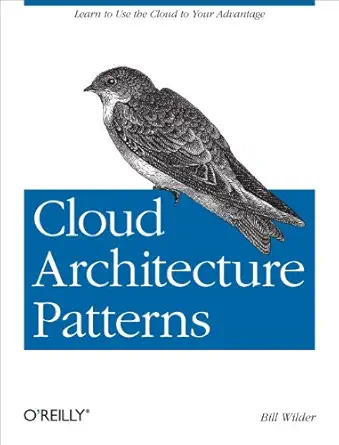 Description: If your team is investigating ways to design applications for the cloud, this concise book introduces 11 architecture patterns that can help you take advantage of cloud-platform services. You’ll learn how each of these platform-agnostic patterns work, when they might be useful in the cloud, and what impact they’ll have on your application architecture. You’ll also see an example of each pattern applied to an application built with Windows Azure.
Description: If your team is investigating ways to design applications for the cloud, this concise book introduces 11 architecture patterns that can help you take advantage of cloud-platform services. You’ll learn how each of these platform-agnostic patterns work, when they might be useful in the cloud, and what impact they’ll have on your application architecture. You’ll also see an example of each pattern applied to an application built with Windows Azure.
Title: Architecting Cloud Computing Solutions: Build Cloud Strategies that Align Technology and Economics While Effectively Managing Risk
OUR TAKE: Kevin L. Jackson and Scott Goessling wrote this book aimed at IT administrators, cloud architects, and solutions architects that want to benefit from cloud adoption at their organization. The authors cover how to design and build architectures that support specific business cases, as well as cloud computing security threats.
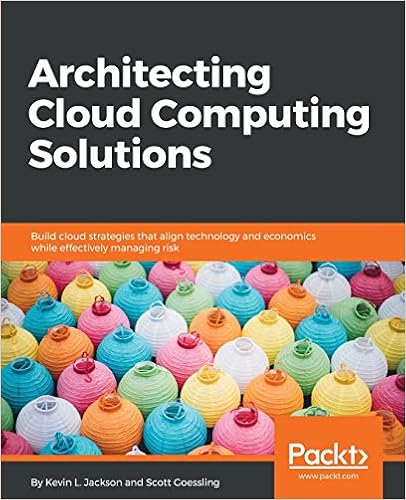 Description: Cloud adoption is a core component of digital transformation. Almost all organizations want to be able to effectively scale their IT environment, make it resilient, and reduce costs. This book helps you focus on the critical cloud solution design considerations and technology decisions you need to make for deploying the right cloud service and deployment models, based on your business and technology service requirements.
Description: Cloud adoption is a core component of digital transformation. Almost all organizations want to be able to effectively scale their IT environment, make it resilient, and reduce costs. This book helps you focus on the critical cloud solution design considerations and technology decisions you need to make for deploying the right cloud service and deployment models, based on your business and technology service requirements.
Title: Architecting the Cloud: Design Decisions for Cloud Computing Service Models
OUR TAKE: This title from Michael J. Kavis guides businesses through key cloud design considerations and explores the pros and cons of each cloud service model. Additionally, the book defines the services cloud providers offer for each service model.
 Description: Cloud computing is all the rage, allowing for the delivery of computing and storage capacity to a diverse community of end-recipients. However, before you can decide on a cloud model, you need to determine what the ideal cloud service model is for your business. Helping you cut through all the haze, Architecting the Cloud is vendor-neutral and guides you in making one of the most critical technology decisions that you will face: selecting the right cloud service model(s) based on a combination of both business and technology requirements.
Description: Cloud computing is all the rage, allowing for the delivery of computing and storage capacity to a diverse community of end-recipients. However, before you can decide on a cloud model, you need to determine what the ideal cloud service model is for your business. Helping you cut through all the haze, Architecting the Cloud is vendor-neutral and guides you in making one of the most critical technology decisions that you will face: selecting the right cloud service model(s) based on a combination of both business and technology requirements.
Title: Architecting Google Cloud Solutions: Learn to Design Robust and Future-Proof Solutions with Google Cloud Technologies
OUR TAKE: Victor Dantas wrote this book targeted at cloud architects responsible for designing and managing cloud solutions with the Google Cloud Platform. System engineers and enterprise architects may also find this title useful.
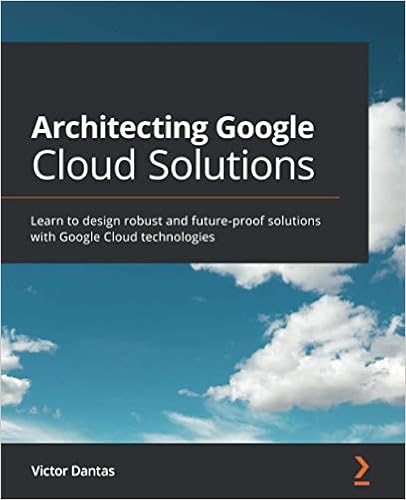 Description: Google has been one of the top players in the public cloud domain thanks to its agility and performance capabilities. This book will help you design, develop, and manage robust, secure, and dynamic solutions to successfully meet your business needs. By the end of this Google Cloud book, you’ll be able to design robust enterprise-grade solutions using Google Cloud Platform.
Description: Google has been one of the top players in the public cloud domain thanks to its agility and performance capabilities. This book will help you design, develop, and manage robust, secure, and dynamic solutions to successfully meet your business needs. By the end of this Google Cloud book, you’ll be able to design robust enterprise-grade solutions using Google Cloud Platform.
Solutions Review participates in affiliate programs. We may make a small commission from products purchased through this resource.


